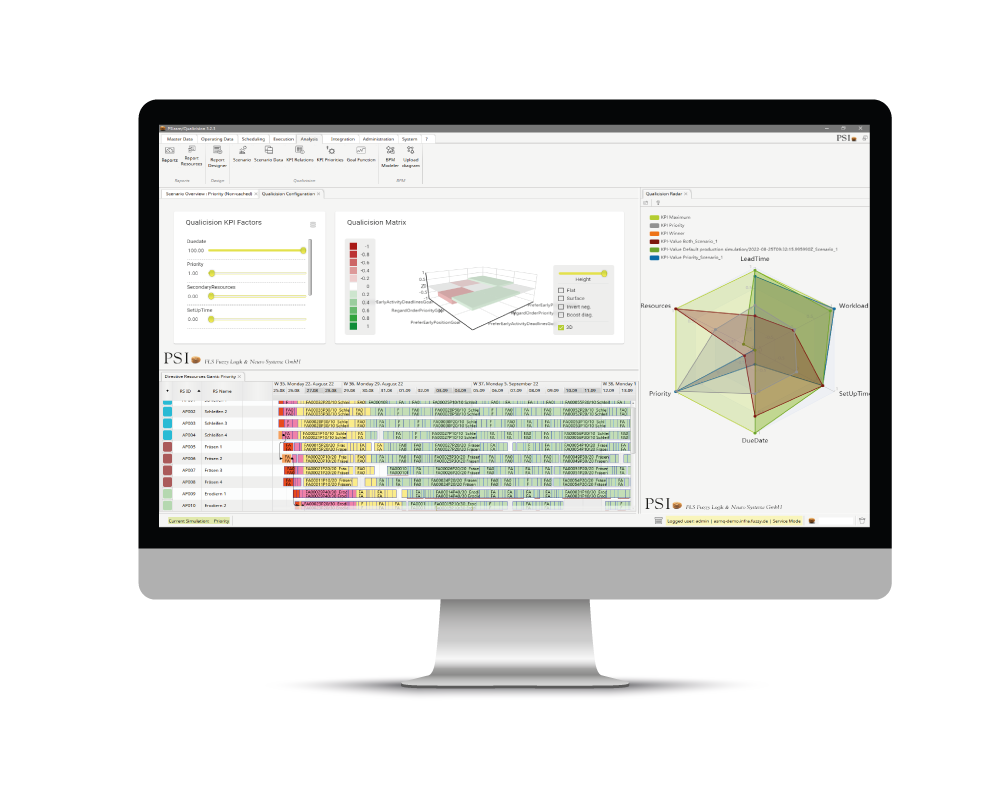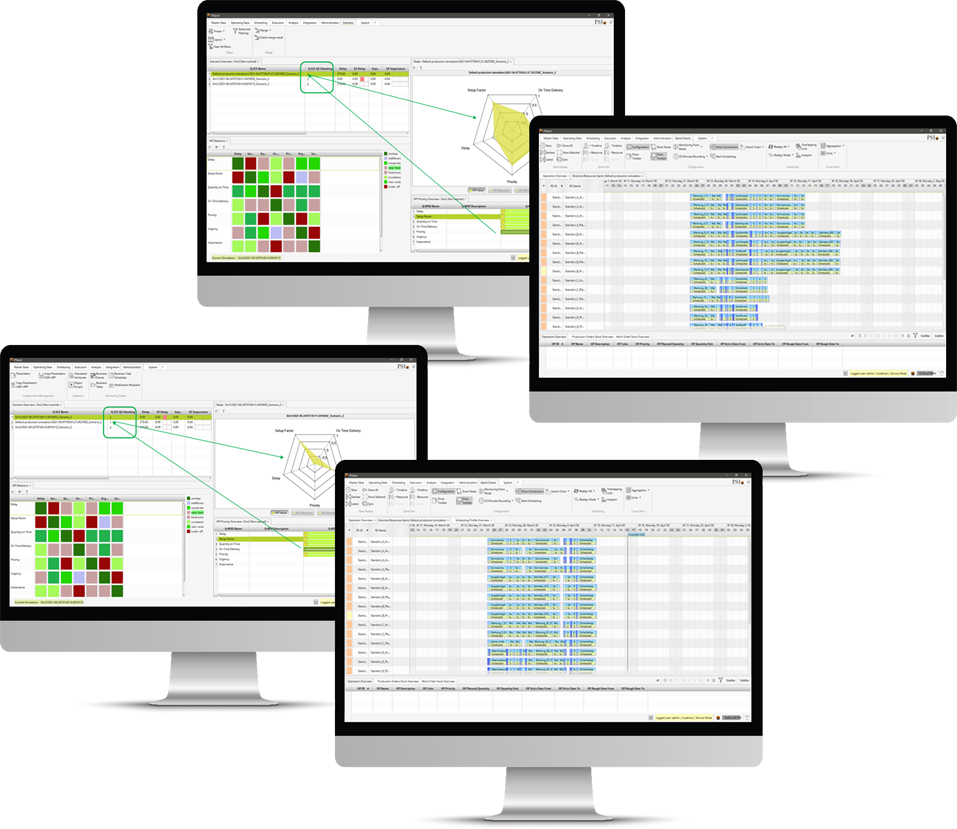The use of PSIasm/Qualicision allows the automatic creation of planning and decision scenarios, see Figure, which enable an optimization history by means of logging the degrees of goal achievement. This is the basis for the use of machine learning methods paired with the Qualicision learning algorithm.
This can map the respective data situations (order data, deadlines, capacities, utilization levels, setup times, etc.) to the process plans in such a way that PSIasm/Qualicision continuously learns the required process behavior automatically from the interactions with the user and proposes preference settings that are optimally matched and parameterized to the current data situation.






